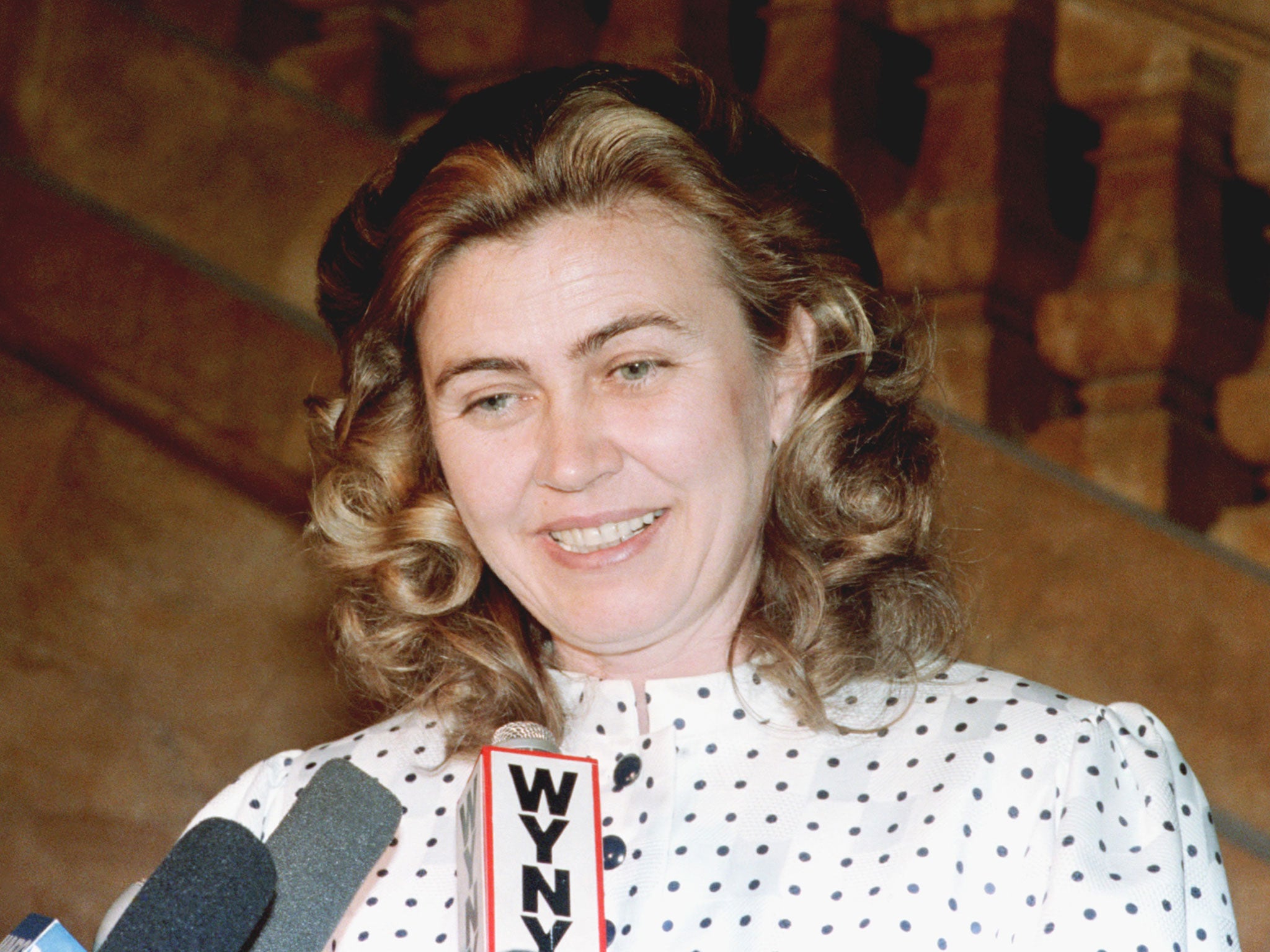
Your support helps us to tell the story
From reproductive rights to climate change to Big Tech, The Independent is on the ground when the story is developing. Whether it's investigating the financials of Elon Musk's pro-Trump PAC or producing our latest documentary, 'The A Word', which shines a light on the American women fighting for reproductive rights, we know how important it is to parse out the facts from the messaging.
At such a critical moment in US history, we need reporters on the ground. Your donation allows us to keep sending journalists to speak to both sides of the story.
The Independent is trusted by Americans across the entire political spectrum. And unlike many other quality news outlets, we choose not to lock Americans out of our reporting and analysis with paywalls. We believe quality journalism should be available to everyone, paid for by those who can afford it.
Your support makes all the difference.In her way, Barbara Piasecka Johnson epitomised the American dream. She came to New York in 1968, an immigrant from Poland with a degree in art history and barely $100 in her pocket. She left some 18 years later as one of the richest women in the world, her fortune sealed by victory in one of the largest – and surely the most unpleasant – probate battles in US history.
This bittersweet fairy tale began when, soon after her arrival, she found herself at a party where she met a maid in the New Jersey household of J Seward Johnson, Jr, an heir of the Johnson & Johnson pharmaceutical empire. The maid told her there was a vacancy as a cook. Barbara applied and was given the job by Johnson's second wife, Essie.
Both her English and her cooking skills, it quickly became evident, were limited, but that hardly mattered. Johnson was besotted with her. When she left the household in 1969 to study art at New York University, he set her up in a Manhattan apartment and then moved in with her. Two years later the Johnsons divorced and he married Barbara. She was 34, he was 76. "I never expect it," she claimed later, "because we could hardly talk to each other."
With her new husband's money her life was transformed. In particular, she could indulge the love of art that he also shared, building a collection of tapestries, paintings and furniture. When Johnson died in 1983 he left the bulk of his $500m estate to his widow, virtually disinheriting his six children in favour of the stepmother younger than almost all of them.
What followed was a 17-week mudfight in a Manhattan courtroom costing $24m in legal fees and laying bare the tensions and feuds in one of the country's richest families. At the heart of it was the immigrant woman from Poland who, her stepchildren claimed, had "bullied and terrorised" their father into changing his will. The suit accused her of using "fraud, duress and undue influence" to divert his fortune her way.
The proceedings, which would surely have appalled her shy and private husband, were a sensation, not least for the conflicting depictions of Barbara that emerged. Some witnesses defended her as loving nurse of her ailing husband, while a servant testifying for the family said she treated her dog with greater affection.
In his 1993 book on the case, Undue Influence, author David Margolick described the Barbara that emerged as "alternately compassionate and cruel, cunning and naïve, loyal and fickle... – cheerful country girl and urbane shrew – someone who spent her husband's final weeks either wiping his rectum or circling in auction-house catalogues the antiques she would soon buy with his money."
Ultimately the case was settled in 1986, just before it was sent to jury, in a way permitting all sides to claim victory. The widow retained around $350m of the estate, including 18m J&J shares and the couple's 140-acre spread in the woods outside Princeton, New Jersey (named Jasna Polana, after Leo Tolstoy's estate south of Moscow). Later she had it turned into a country club, complete with a golf course designed by Gary Player. The children received $40m, while $20m went to a Florida-based oceanographic institute her husband had founded.
With her "American hell" finally behind her, Barbara moved to Monaco, devoting her life to her art collection and good works, many of them in her native Poland. Over the years she was involved in various headline-making art deals, including the $36.7m sale in 2004 of an 18th century Florentine cabinet, the highest price paid at auction for an item of furniture.
In Poland she offered $100m to revive the Lenin Shipyard in Gdansk, birthplace of the Solidarity trade union movement, even appearing on a US magazine cover with the future Polish president Lech Walesa, as "Lech's American Angel". That scheme failed, but she supported various artistic and charitable causes, including a foundation in Gdansk for autistic children. A month before her death she was listed by Forbes Magazine as one of the world's 50 richest women, worth an estimated $3.6bn.
Rupert Cornwell
Barbara Piasecka Johnson, heiress and philanthropist: born Staniewicze, Poland 25 February 1937; married 1971 John Seward Johnson (died 1983); died Wroclaw, Poland 1 April 2013.
Join our commenting forum
Join thought-provoking conversations, follow other Independent readers and see their replies
Comments